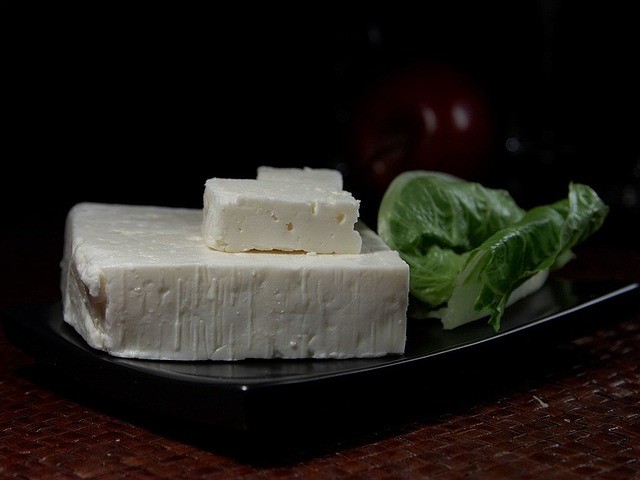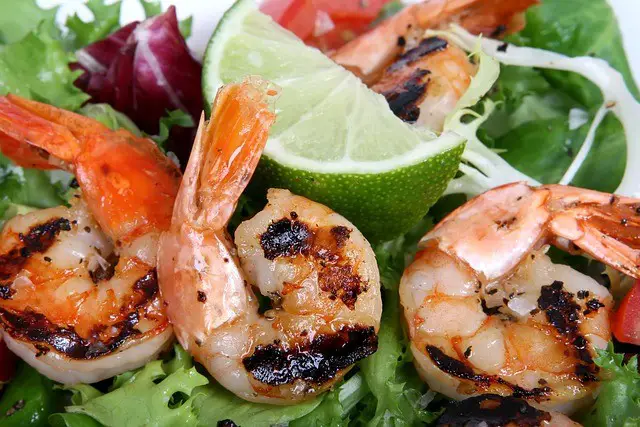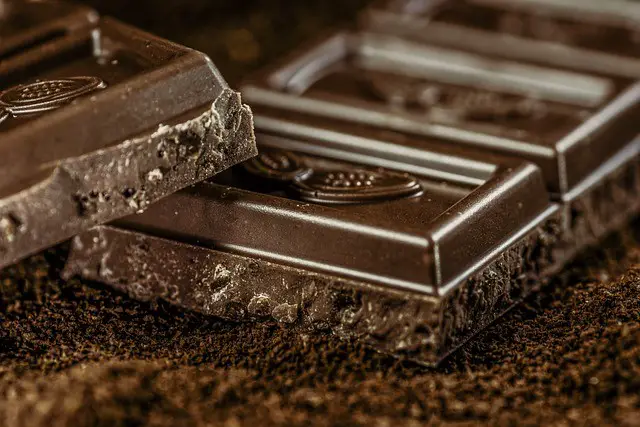On a keto diet, low-carb high-fat foods are a priority. Dairy products are allowed on the keto diet because of their high-fat content. Among those allowed on a low-carb diet are cheeses, one of the most beloved forms of dairy.
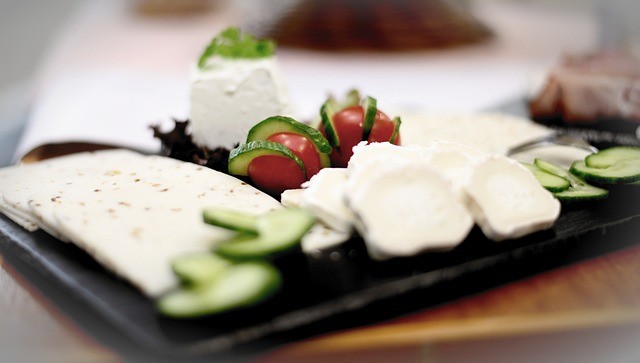
The net carbs in cheeses are what makes them keto-friendly. However, not all cheese is keto, depending on how many carbs the cheese contains. The best cheeses for keto include cheddar cheese, gouda, goat cheese, parmesan cheese, and blue cheese. These cheeses also boast of a high-fat content, rich in healthy fats that do not pose a risk to your heart health.
Since different cheeses are not created equal, it is important to know which ones are keto-friendly. Isn’t that why we’re asking, is feta cheese keto? In this article, we will discuss what feta cheese is, how to make it, how to incorporate it into your diet, and how many carbs it contains. At the end of the article, we will have addressed the elephant in the room, is feta cheese keto-friendly?
What is Feta Cheese?
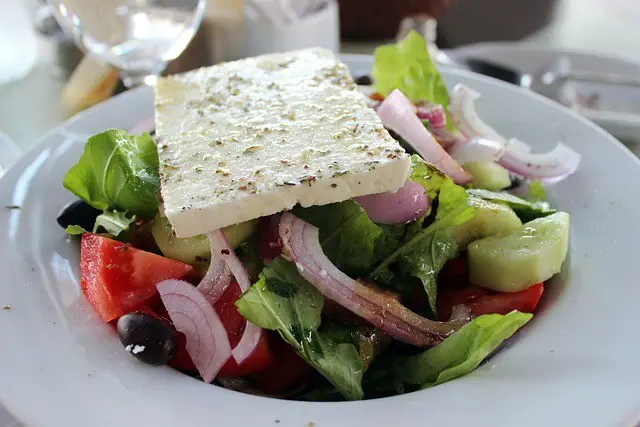
Feta cheese is a type of Greek cheese that is brined white cheese made from sheep’s milk or a combination of sheep’s and goat’s milk. Countries in the European Union (EU) limit the name feta to cheeses that have been made traditionally in Greece.
The traditional recipe blends 70% of sheep’s milk and 30% of goat’s milk that is locally sourced. The most consumed feta in the USA is made from cow’s milk.
Feta cheese is soft, with little to no holes, it’s compact and with no skin. It is aged in block form since it is crumbly with a grainy texture. For a cheese to be considered feta, it requires maximum moisture of 56% and a minimum fat content in dry matter of 43%. Its pH is 4.4 to 4.6.
Feta cheese has a salty and tangy taste, which can be mild or sharp. The main use of this cheese is as a table cheese in salads like Greek salads and in pastries like phyllo-based Greek dishes like spinach pie and cheese pie.
You serve the cheese with olive oil and/or olives and sprinkled with aromatic herbs like basil and oregano. You can also eat feta cheese cooked (mostly grilled) in sandwiches and omelets.
Feta Cheese Nutritional Information
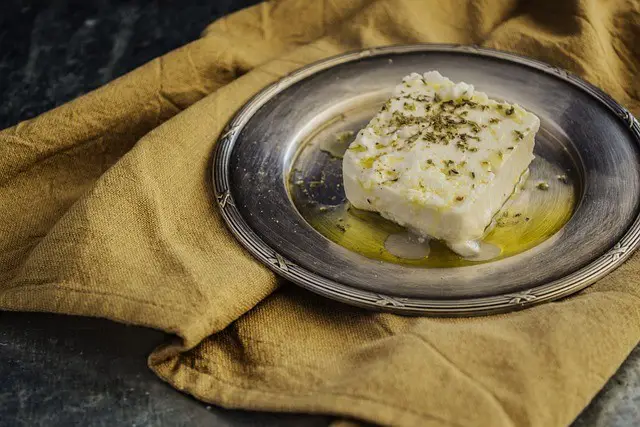
Is feta cheese keto-friendly? To get an accurate answer to this, we need to understand the macronutrient content of feta cheese. What is the amount of net carbs feta cheese? How many grams of fat does this cheese contain? We also need to know its micronutrient content to see the benefits of eating feta to the body.
According to USDA, 100 g per serving of feta cheese contains:
- Energy: 273 kcal
- Water: 51.9 g
- Protein: 3.09 g
- Total fat: 19.1 grams of fat
- Total saturated fatty acids: 11.2 grams of fat
- Fatty acids, monounsaturated: 4.18 grams of fat
- Cholesterol: 38 mg
- Total carbs: 5.58 grams of carbs
- Fiber: 0 g
- Total Sugar: 1.63 g
- Calcium: 371 mg
- Phosphorus: 328 mg
- Sodium: 1030 mg
- Thiamin: o.o56 mg
- Riboflavin: 0.444 mg
- Retinol: 147 µg
When taking a look at the net carbs feta cheese per serving, can we consider feta cheese keto-friendly?
Is Feta Cheese Keto?

The net carbs per 100 g serving of feta cheese are 5.58 grams of carbs and the fat content is 19.1 g, with most of the fat being saturated fat. To answer is feta cheese keto-friendly, we need to understand the carb limits of the different types of the keto diet.
Types of the Keto Diet and Carb Limits
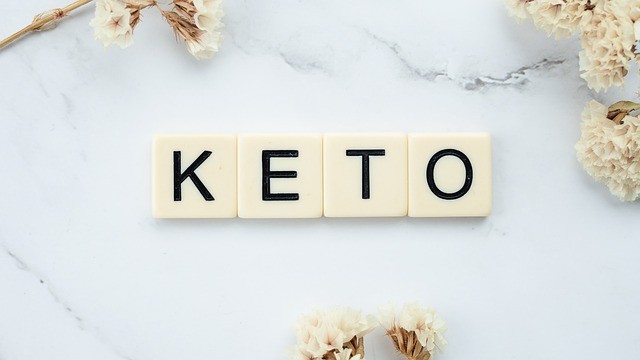
Keto dieters can pick from different types of keto, depending on the carb restrictions they are comfortable with. Here are the keto diets you can follow and their carb limits:
- Standard keto diet: Restricts carb intake to 20-50 g per day
- The targeted keto diet (TKD): Limits carb intake to 25-50 g per day
- Cyclical keto diet: Restricts carb intake to 20-50 g a day on keto days
- High protein keto diet: Limits carb intake to 20-50g a day
When you look at the net carbs feta cheese, would you consider it keto? A typical serving of feta cheese is 1 ounce (28 g), which gives you about 75 kcals, 6 g of fat, and 1.1 g of net carbs. Considering its high-fat content and how many carbs per serving feta cheese contains, we can say it is keto-friendly if consumed in a moderate amount.
This moderation is due to the high calories and too much fat in feta that can accumulate in the adipose if not accounted for leading to weight gain. Keto dieters on a strict keto diet should avoid feta and opt for other cheeses that are more keto-friendly.
The less strict keto diet like TKD, allows you to consume more grams of carbs during work out, which makes feta cheese a good addition to the diet in moderation. Feta is also a good source of protein, with 21% of its calories coming from protein.
Protein is essential for recovery and muscle building in exercise. Consuming feta in moderation will allow you to get enough calories and protein for optimum performance during exercise on a ketogenic diet.
What are the Benefits of Feta Cheese Intake?
Not all cheeses are low-carb, but the benefits of consuming cheese go without saying. Feta cheese, in addition to being high fat and low carbs in a moderate amount, has the following benefits for you:
Good for Your Bones

The calcium content in feta is higher than in most cheeses. Calcium is essential for promoting the growth and strengthening of your bones and teeth. Moreover, it is high in phosphorus, which when consumed with calcium has been shown to improve bone density and prevent osteoporosis.
Weight Management

Feta contains an unsaturated fatty acid, conjugated linoleic acid (CLA), that has been shown to assist with weight loss. Research has shown that CLA is an anti-obesogenic agent and poses anti-atherosclerotic properties.
A study that aimed to investigate the effects of linoleic acid supplementation on body weight, serum insulin, and leptin in obese adults resulted in a decrease in body fat mass, body fat percentage, and trunk mass. CLA supplementation also reduced serum leptin, a hormone involved in the regulation of hunger and energy balance.
Consuming feta cheese in moderation can reduce hunger and food intake which further helps in losing weight.
Rich in Probiotics

Like other fermented foods, cheese is a rich source of probiotics. Probiotics provide food for the good bacteria in the gut improving digestion and immune function.
Probiotics can help improve diarrhea and constipation associated with irritable bowel syndrome and inflammatory bowel disease.
Blood Sugar Control

Calcium and protein play a significant role in blood sugar regulation. Feta is rich in calcium and proteins and hence can help reduce the risks of developing diabetes. But remember, it is high in calories, so moderation is key!
These benefits make you just love feta! Hold your horses, there may be negative effects to eating feta.
Cons of Feta Cheese
Feta cheese is great on a ketogenic diet since it is low carb, high fat, and contains many vitamins and minerals. However, its sodium content is too high considering it is aged in brine.
Blood Pressure

High sodium intake increases blood pressure, a cardiovascular disease risk factor. Hypertensive patients should speak to their healthcare provider before including feta in their ketogenic diet.
Pregnancy
Pregnancy compromises one’s immunity. Feta cheese is made from unpasteurized milk which is high in probiotics. If your immunity is compromised high intake of probiotics may lead to infections.
Moreover, feta may contain Listeria monocytogenes, a flu-causing bacterium that can be harmful to unborn children. Avoid unpasteurized cheeses when expectant.
Drug-Nutrient Interactions
Feta is rich in tyramine, a monoamine in fermented foods. Tyramine is broken down by an enzyme known as monoamine oxidase. Consuming fermented foods has been associated with increased heart rate, spikes in blood pressure, and migraines in people on monoamine oxidase inhibitors (MOI).
Allergies
The American cheese variety of feta is made from cow’s milk while traditional options are made from milk from goats and sheep. Goat milk contains less lactose than cow’s milk making them easily digestible.
Milk is also high in protein, and so is feta cheese. Individuals who are lactose intolerant or have milk protein allergies should avoid cheeses and dairy.
How to Make Crumbled Feta Cheese
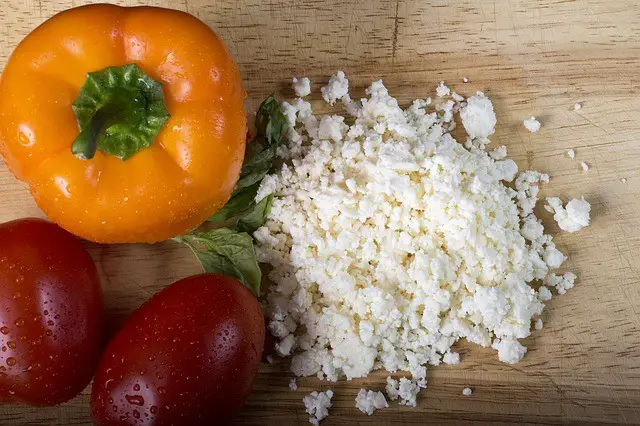
Crumbled feta contains the same amount of carbs per serving as block cheese, so no need to worry about being kicked out of ketosis when you eat it.
Crumbled Feta Recipe
All you need is your block of feta cheese, ice water (cold water), and a fork (optional)! Take your block of feta and cut it into slices. The number of slices depends on how much crumbled feta you want to make. Run your feta under cold water for 10 to 15 seconds to firm it and wash away the brine.
If you want to use the feta as a topping for salads, mash it with your hands into smaller pieces. For feta that is used in meat dishes, use the tine of your fork to pike the feta instead of mashing it.
How to Incorporate Feta Cheese into Your Ketogenic Diet
You can incorporate feta into your keto foods to add flavor and increase the fat and protein content of your keto vegetables.
- Add to your keto foods: cherry tomatoes, vegetables, and feta cheese are the right ingredients for a delicious high-fat, low-carb meal. Increase the fat content of your low-carb foods by adding healthy fats. Make feta and zucchini noodles instead of pasta, to keep carb intake low.
- Combine with other proteins: adding feta cheese to grilled chicken and meat will not only add flavor to your foods but will increase protein content which has been shown to reduce hunger. This would be great for a high-protein ketogenic diet.
- Bake it: Feta baked with fresh tomatoes and olives is an easy-to-make appetizer recipe for anyone who wants to eat low-carb. It is packed with healthy fats from olives and feta with a rich, juicy texture making this dish a delight to eat.
Feta is gluten-free and is considered keto-friendly when consumed in a moderate amount. There are other cheeses, however, that would be a better choice for a keto diet than feta cheese.
What Kind of Cheese is OK for Keto?
The following cheeses are the best on the keto diet:
- Gouda: One ounce serving of gouda cheese contains 8 g of fat, 7 g of protein, and 1 g of carbs, making this cheese keto.
- Goat cheese: It is a creamy cheese made from goat’s milk with a tart flavor. It is easily digestible compared to cheeses made from cow’s milk since it contains less lactose. One ounce serving will give you 9 g of fat, 7 g of protein, and 2 g of net carbs, which means you can eat it on keto.
- Parmesan cheese: Parmesan cheese contains 1 g of carbs, and 7 g of fat per ounce serving. As long as you’re not eating it on pasta, parmesan is a great topping for your salads or as a snack with your vegetables and meat.
- Cream cheese: Cream cheese contains 9 g of fat and 2 g of carbs per ounce serving. Nothing beats cream cheese as spread on a keto bagel!
- Mozzarella: Unlike other cheeses, you eat mozzarella fresh rather than aged. It contains 6 g of fat and 1 g of carbs per ounce serving.
Other cheeses you can eat on keto are halloumi (grilling cheese), blue cheese, brie cheese, and gruyere cheese.
It is important to mention cheeses that should be avoided on keto:
- Highly processed cheeses like American cheese and canned or spray cheese
- Cottage cheese
- Ricotta cheese
- Low-fat cheese
Bottom Line
When it comes to feta and being keto-friendly, moderation is everything! Eating too much feta will increase caloric intake which can cause weight gain if not put in check. Try and incorporate feta for flavor and other benefits into your diet.
Drop your favorite keto feta cheese recipe in the comments below!

